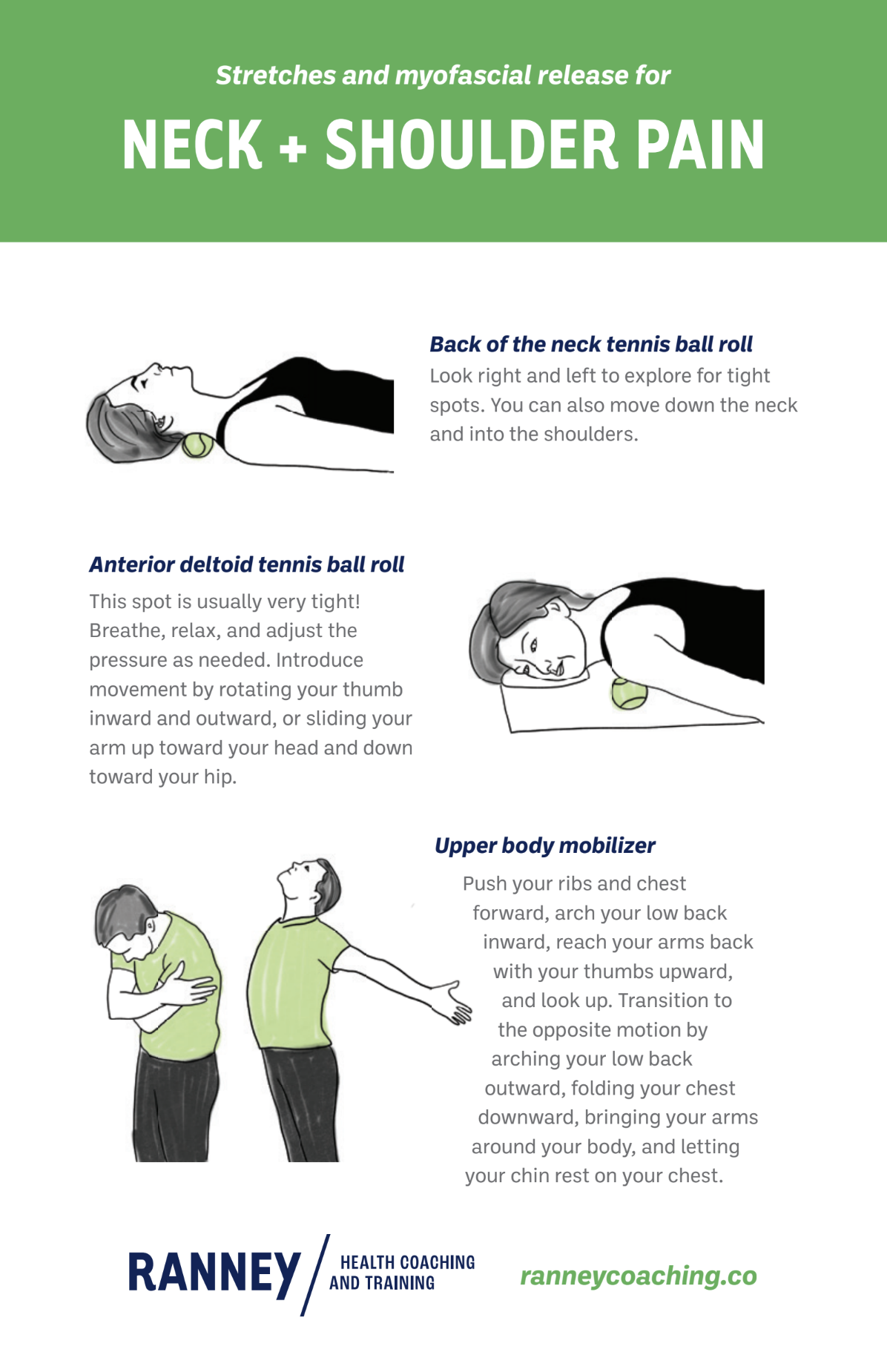Neck pain and shoulder pain stretches and massage techniques
Did you know the average weight of the human skull is around 11 lbs? With how often we look downward in our lives, like for texting, cooking, and working with our hands, it makes sense that neck and shoulder pain is a common ailment. Left untreated, this can lead to migraines, pinched nerves, and reduced mobility of the neck and shoulder.
Here are a couple neck and shoulder myofascial release techniques and stretches that are commonly used to release these areas.
Follow these simple tips for stretching and myofascial release to get the most out of your stretch session.
Back of the neck tennis ball roll
Laying down on your back on a solid surface, place a tennis ball between the back of your neck and the floor. Look right and left to explore for tight spots. You can also move down the neck and into the shoulders.
To increase the pressure, try putting the ball on top of a yoga block or book to raise your neck higher off the ground.
Gently rotate your head to explore different pressure angles
Anterior deltoid tennis ball roll
This spot is usually very tight!
Lay face down on a solid surface and place a tennis ball between the front of your shoulder and the floor, near your armpit. This is your anterior (front) deltoid.
Breathe, relax, and adjust the pressure as needed. Introduce movement by rotating your thumb inward and outward, or sliding your arm up toward your head and down toward your hip.
Adjust pressure as needed by pushing harder or more gently on the tennis ball
Upper body mobilizer
In a standing position, arch your low back outward, fold your chest downward, bring your arms around your body, and let your chin rest on your chest.
Transition to the opposite motion by pushing your ribs and chest forward, arching your low back inward, reaching your arms back with your thumbs upward, and looking up.
Move back and forth between the two positions to mobilize.
Move smoothly between the first and second positions to mobilize
These techniques can release tension, but in order to truly treat the problem, one must reduce the original actions that are leading to the pain, such as posture or tensing the shoulders when stressed.
Contact me to get started on managing your neck and shoulder pain.




